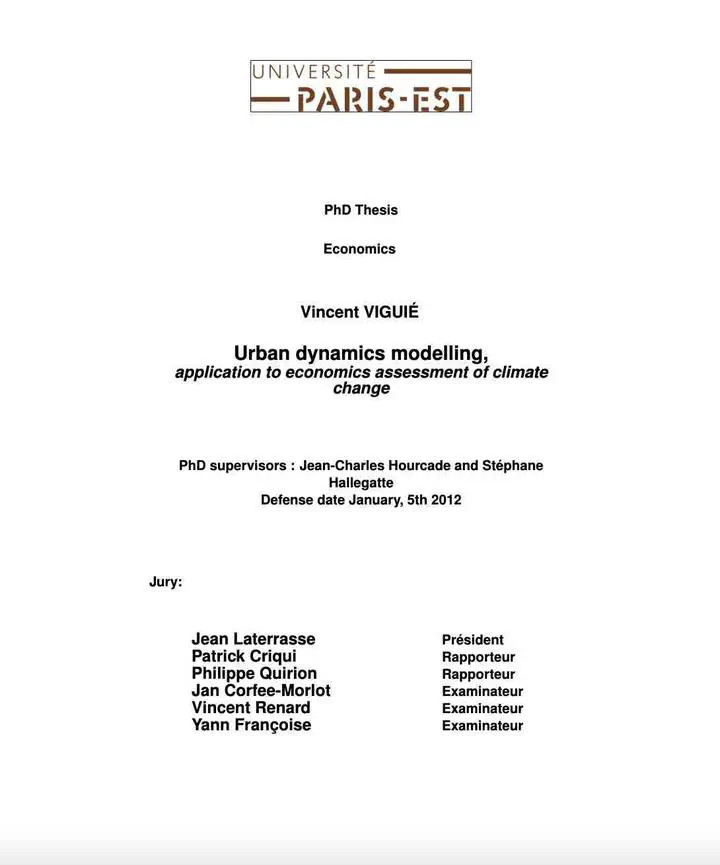🎓 PhD thesis : Urban Dynamics Modelling, Application to Economic Assessment of Climate Change

Abstract
Because they are home to more than half of the world population, and because mostof the world economic activity takes place within them, cities are at the forefront ofglobal environmental issues. Land use planning, urban transport and housing policiesare now recognized as major tools for the reduction of both greenhouse gases emis-sions and vulnerability to climate change impacts. So far, however, how to use thesetools efficiently remains unclear. At least three main difficulties explain this, and playa key role in urban climate policies analysis. First, urban climate policies are also notdeveloped or implemented in a vacuum; they interact with other policy goals, such aseconomic competitiveness or social issues, giving rise to both synergies and conflicts.Second, inertia is a key factor when designing optimal climate policies: structural mod-ifications in cities occur slowly over a long time horizon. Some immediate actions arerequired if cities are to be adapted to a different climate or to help reduce greenhousegases emissions within a few decades. Third, the evolution of a city depends on severalexternal factors, on which local policy-makers do not generally have much influence:demographic, socio-economic, cultural, political and technological changes will play amajor role. This uncertainty has to be taken into account, and climate policies have tobe robust against future possible global evolutions is important. These three difficultiesare not, however, impossible to overcome, and we will illustrate how integrated citymodelling can help address these issues.